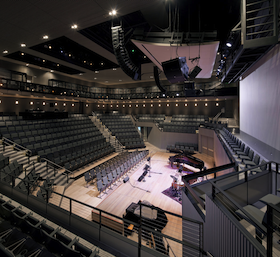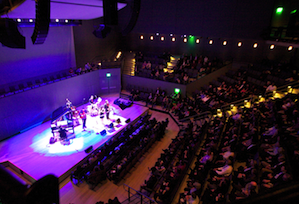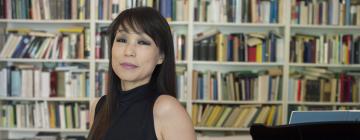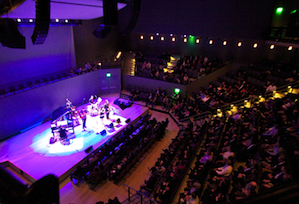
Returning to the SFJAZZ Building last weekend for the first time since it opened early this year, I had a few negative thoughts about this comfortable hall with excellent acoustics, and attractive exterior of glass walls.
It is right in the middle of San Francisco's new music center — bracketed by the War Memorial Opera House, Herbst Theatre, and Diane B. Wilsey Center under construction in the War Memorial Veterans Building, Davies Symphony Hall, Harold L. Zellerbach Rehearsal Hall, Bill Graham Civic Auditorium, Nourse Theatre, S.F. Conservatory of Music, S.F. Girls Chorus' Kanbar Center ... and I may be missing some venues in this amazing concentration of riches.
Besides its namesake mission, SFJAZZ now also serves as the temporary venue for organizations left homeless without Herbst, including San Francisco Performances, Philharmonia Baroque, others. It's a busy, important performance place ... with a few problems:
* The interior has painted wood in front of the hall, cement walls and floor, all prison-gray and sort-of-beige; severe, industrial, cold. For the opening, at least, there were some color floodlights. Now, for regular (and heavy) use, there is not a smidgen of color. Why?

* Against unnecessary wire and metal bar separation between rows, there is an accident waiting to happen on the steep steps of the stage-left balcony center aisle, which still has no handrails. (Direction is specified because the building is pleasantly asymmetrical, so the stage-right balcony is different, has no center aisle.)
* The main lobby is small and rather chaotic as people rush in various directions without a discernible system. The jostling could be eased with just a little forethought and organization.
* There is no question about the hall's good acoustics, but there is a strange, unnecessary, and counterproductive use of amplification or — as it's often called these days — "sound enhancement." With it s compact shape and seating less than 700, this is a hall where the natural sound of voice and instruments could be heard in their glory, but instead, we get the homogenized sound of electronics.
After a not particularly noticeably unamplified performance of a symphony by the Philharmonia Baroque on Friday, soprano Anna Dennis came downstage — inches from the first row, a few yards from the furthest parts of the hall — and with amplification turned on, suddenly there was a startlingly different sound from that of the accompanying orchestra. It could have been just an error by the engineer running the board, but why on earth would you amplify a soprano with a big voice in a small space? Or, perhaps even more to the point, an orchestra?
SFJAZZ is far too important a venue for management not to remedy such unnecessary drawbacks. Just grab a can of paint, put in a handrail, get some decorative red velvet cordons in the lobby to direct traffic, and keep amplification turned off. What could be simpler?

